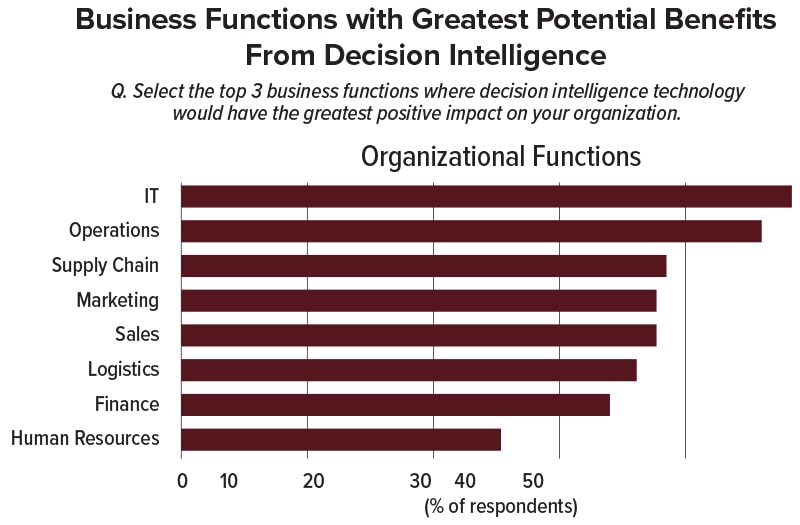The Supply Chain Benefits of AI-Powered Decision Making

Leaders from eight countries and a range of industries were asked about the challenges and opportunities of AI-powered decision making. Here are the top takeaways.
Despite buzzy headlines about ChatGPT, the real transformative potential of AI lies in its ability to analyze real-time data, identify patterns in evolving environments, and help companies make faster, smarter decisions with better outcomes.
This potential is clear in supply chains, where both the number and complexity of decisions are increasingly complex. Achieving goals such as reducing transportation costs and carbon emissions, or improving order fulfillment speed and accuracy, requires better visibility and agility in decision making.
Today, early adopters of AI are already achieving these goals across transportation and logistics, sourcing and procurement, manufacturing, and beyond.
I’ve heard success stories from supply chain executives. Their companies are capturing a digital record of their supply chains to better track and respond to evolving challenges, enabling continuous learning and improvement while training future logistics decision makers.
At one global CPG manufacturer, AI allowed teams to move from manual processes (such as managing transshipments in spreadsheets) to digitized recommendations. This company now relies on AI to identify needed stock movements and to calculate the best course of action by examining weight and volume utilization, truck utilization, and stackability. As a result, truckload utilization rose from 87 percent to 95 percent – reducing both transportation costs and carbon emissions, and improving customer service levels.
If you’re like many leaders I’ve spoken to recently, you may wonder how this new technology will improve OTIF performance, reduce labor and expedite costs, and help you better manage capacity. Moreover, you need to know you can trust AI to deliver accurate decisions and quantifiable results.
What Global Executives are Saying
What Every Executive Needs to Know About AI-Powered Decision Intelligence, a recently commissioned IDC Global survey of Fortune 1000 companies, addresses some of these questions.
Leaders from eight countries and a range of industries were asked about the challenges and opportunities of AI-powered decision making.
Here are some of the takeaways:
- Survey respondents identify IT, operations, and supply chain as the top three business functions where AI-powered decision intelligence technology would have the greatest positive impact. (See chart above)
- Only 20% of survey respondents say they feel completely comfortable with the number of decisions that need to be made each day.
- 33% still rely on intuition or experience to make business decisions.
- There is a disconnect between executives and employees regarding “in-the-field” decision making: only 55% of executives say they mostly, or fully, know how these decisions are made.
- Companies that use AI-powered decision intelligence are improving business metrics up to 20% across product and service innovation, employee productivity, and customer and employee retention, among others.
Where Should You Begin?
Leaders know that AI can improve logistics, as shown by IDC survey respondents identifying supply chain and logistics among the top business functions with the greatest potential to benefit from deploying decision intelligence.
The key is making logistics decisions data-driven and, when feasible, automated. By removing bias, intuition, process silos, and manual work from the decision-making process, companies can achieve better outcomes in a relatively short period of time.
The first step in this journey is to take stock of your company’s logistics decision-making processes. Identify the decisions that are siloed, or that rely heavily on manual work – these are good candidates for digitalization.
Next, determine whether it’s better to augment or support the people making those decisions with real-time insights, or to deliver data-driven recommendations that can be manually or automatically accepted.
Finally, keep in mind that these initiatives will require education to enable adoption, and change management to identify the best processes for each business area. Start with the logistics decisions that have the greatest potential value, then explore how you can scale the use of AI across other decisions or business functions.
As the pioneers of decision intelligence are showing, the benefits to be gained are significant. More importantly, building intelligent and efficient supply chain ecosystems today helps us prepare for a better, more sustainable future.
